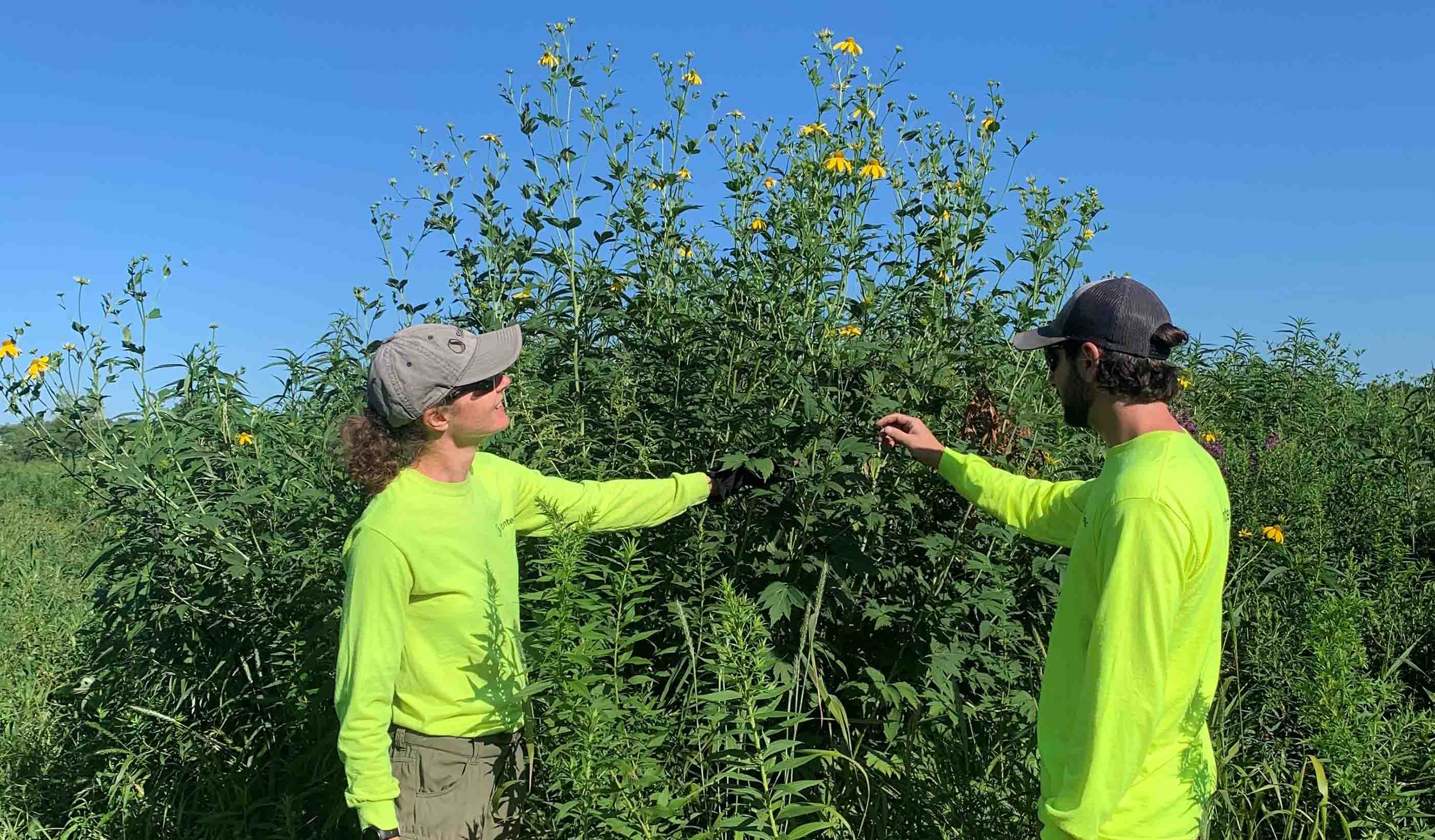The majority of Ryan’s work is done out in the field. His role involves initial site visits, follow up site visits, meetings with the stakeholders to create a vision, and then developing labor and cost estimates to implement the plan. Typically, that means invasive species management, native seeding, prescribed burning, or other adaptive management strategies. At the end of the day, the goal is to create/restore natural habitats and create spaces for the community to enjoy.
During his work on the East Troy Wetland Mitigation Project in Wisconsin, Ryan was able to implement practically every aspect of ecological restoration and focus on what it really takes to restore a site, including tackling the significant challenge of establishing native species cover. Ryan adjusted seed mixes, employed overseeding, and used other adaptive management strategies. Seeing how well the project site has transitioned has been extremely gratifying, and now all that hard work is transferring into long-term management.
Goals going forward? Ryan wants to be more involved in project development and planning. In his free time, you’ll probably still find Ryan outdoors—spending time with his family and friends or hunting and fishing.

